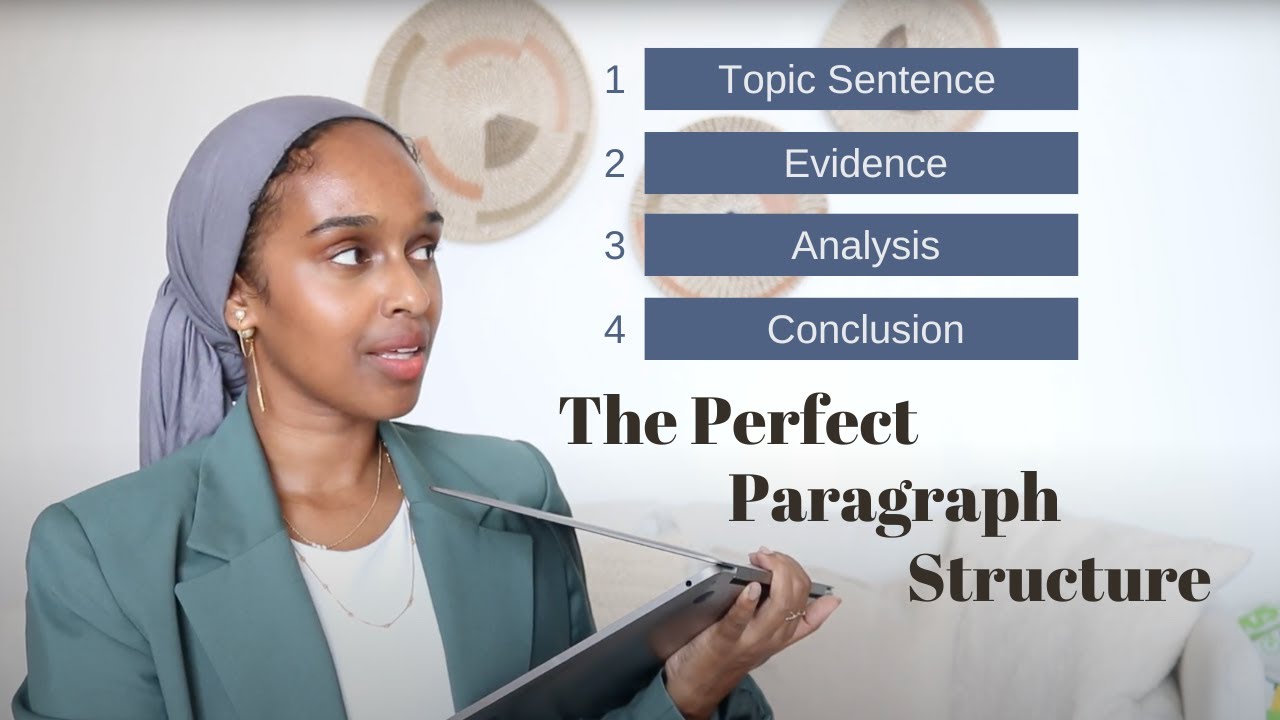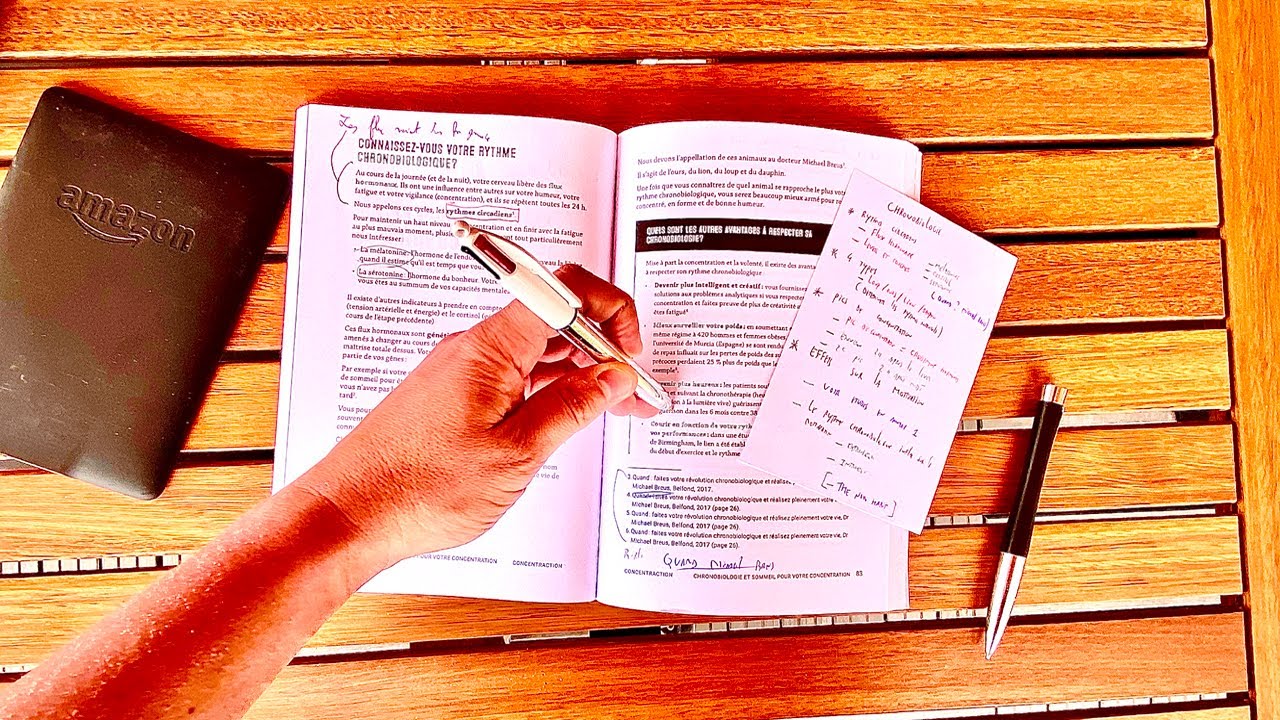The FUN and EFFICIENT note-taking system I use in my PhD
Summary
TLDRMorgan, une doctorante en cinquième année en études théâtrales et de performance, explique comment elle a adopté la méthode Zettelkasten pour améliorer sa prise de notes. Elle partage les quatre principes clés de cette méthode : écrire constamment, considérer tout comme du savoir, rédiger des notes réductibles à une seule idée et connecter ces notes entre elles. Elle utilise le logiciel Obsidian pour appliquer cette méthode, facilitant ainsi la création de liens entre ses idées et améliorant sa productivité académique.
Takeaways
- 🎓 Morgan est un candidat au doctorat en cinquième année en études théâtrales et de performance et a découvert qu'elle avait besoin d'une méthode de prise de notes adaptée à son niveau de recherche.
- 📚 Elle cherchait une méthode pour stocker de grandes quantités d'informations de manière accessible et interconnectée pour faciliter l'écriture de papiers et sa thèse.
- 🔍 Morgan a abandonné sa méthode de prise de notes universitaire basée sur la surlignement et l'organisation manuelle pour adopter une approche plus efficace.
- 📝 Elle a adopté la méthode Zettelkasten, une technique de gestion de connaissances qui facilite la prise de notes, l'organisation et l'interconnexion des informations.
- 💡 La méthode Zettelkasten a été popularisée par Nicholas Luman et a été améliorée grâce aux technologies informatiques modernes, comme les logiciels de prise de notes.
- 💻 Morgan utilise le logiciel Obsidian pour appliquer la méthode Zettelkasten, bien qu'il existe d'autres options disponibles pour les utilisateurs.
- ✍️ Les quatre principes clés de la méthode Zettelkasten incluent l'écriture fréquente, la considération de tout comme étant du savoir, la rédaction de notes basées sur des pensées élémentaires et l'interconnexion de ces pensées.
- 🔗 L'interconnexion des connaissances est un aspect crucial de la méthode Zettelkasten, où chaque nouvelle note est reliée à d'autres idées pour créer un réseau de pensées.
- 📈 Morgan a expliqué en détail comment elle utilise Obsidian pour créer des notes bibliographiques, pour transformer des notes éphémères en notes permanentes et pour établir des liens entre ses notes.
- 🔗 La vue en graphique d'Obsidian illustre la complexité et la richesse des connections entre les notes, démontrant la puissance de la méthode Zettelkasten pour la création et la gestion des connaissances.
Q & A
Qu'est-ce que le système Zettelkasten mentionné dans le script ?
-Le système Zettelkasten est une méthode de prise de notes et de gestion de connaissances qui permet de stocker et d'interconnecter de l'information de manière à faciliter la recherche et la création de liens entre les idées.
Qui a popularisé initialement la méthode Zettelkasten ?
-La méthode Zettelkasten a été initialement utilisée par Nicholas Luman dans les années 1960.
Quel est le logiciel que Morgan utilise pour appliquer la méthode Zettelkasten ?
-Morgan utilise le logiciel Obsidian pour appliquer la méthode Zettelkasten, bien qu'il existe d'autres options disponibles.
Quelles sont les quatre principes fondamentaux du système Zettelkasten que Morgan mentionne ?
-Les quatre principes fondamentaux sont : écrire constamment dans ses propres mots, considérer tout comme de la connaissance, considérer la pensée comme l'unité de base de la connaissance, et interconnecter les connaissances.
Pourquoi la méthode de prise de notes utilisée par Morgan pendant ses études supérieures n'était-elle pas adaptée au doctorat ?
-La méthode de prise de notes utilisée par Morgan pendant ses études supérieures consistait simplement à souligner des citations dans les livres et à écrire dans les marges, ce qui ne permettait pas de stocker et d'interconnecter de grandes quantités d'information de manière efficace.
Quel est le but ultime de la méthode Zettelkasten selon le script ?
-Le but ultime de la méthode Zettelkasten est de faciliter la prise de notes, l'organisation des connaissances, et de permettre la création de liens entre les idées pour soutenir la pensée créative et critique.
Comment Morgan transforme-t-elle ses 'fleeting notes' en 'permanent notes' ?
-Morgan transforme ses 'fleeting notes' en 'permanent notes' en écrivant les idées dans ses propres mots, de manière irréductible mais complète, et en les connectant à d'autres idées existantes dans son système Zettelkasten.
Quelle est la différence entre 'fleeting notes' et 'permanent notes' ?
-'Fleeting notes' sont des notes rapides et temporaires prises pour capturer des idées, tandis que les 'permanent notes' sont des notes rédigées de manière permanente, complète et interconnectées dans le système Zettelkasten.
Comment Morgan organise-t-elle ses notes bibliographiques dans Obsidian ?
-Morgan organise ses notes bibliographiques en les titrant avec le nom de l'auteur et la date de publication du livre, en y incluant sa citation MLA et en créant des liens vers d'autres notes pertinentes.
Quel est le rôle des liens dans le système Zettelkasten d'Obsidian ?
-Les liens dans Obsidian jouent un rôle crucial en connectant les notes entre elles, facilitant ainsi la navigation et la création de réseaux d'idées interconnectées.
Outlines

Cette section est réservée aux utilisateurs payants. Améliorez votre compte pour accéder à cette section.
Améliorer maintenantMindmap

Cette section est réservée aux utilisateurs payants. Améliorez votre compte pour accéder à cette section.
Améliorer maintenantKeywords

Cette section est réservée aux utilisateurs payants. Améliorez votre compte pour accéder à cette section.
Améliorer maintenantHighlights

Cette section est réservée aux utilisateurs payants. Améliorez votre compte pour accéder à cette section.
Améliorer maintenantTranscripts

Cette section est réservée aux utilisateurs payants. Améliorez votre compte pour accéder à cette section.
Améliorer maintenantVoir Plus de Vidéos Connexes

VDS #5 - COMMENT PRENDRE DES NOTES EFFICACES ?

How I Got a First Class in Every Essay at University Using This Paragraph Structure + Examples

Sketchnote Mini Workshop - Interaction South America 2017

MON SYSTEME DE PRISE DE NOTES pour les lectures

Comment obtenir 50+ RDV B2B par mois en 3h par semaine ?

🪩 HOW TO ROMANTICIZE SCHOOL🩰🐆 A+ student back to school/ study motivation & pinterest student habits

Just use apple apps for productivity (Reminders, Notes, Calendar)
5.0 / 5 (0 votes)